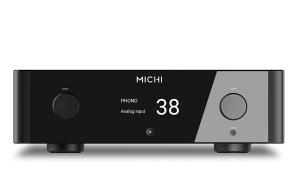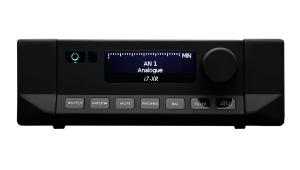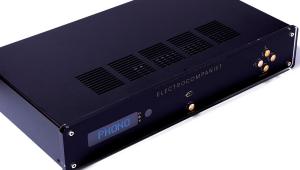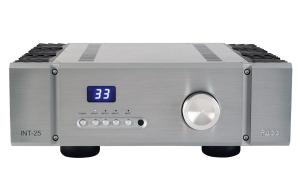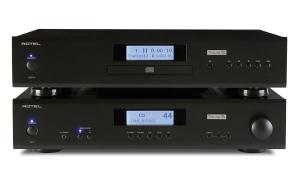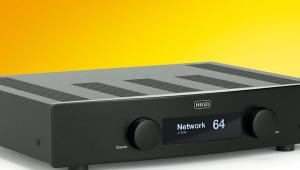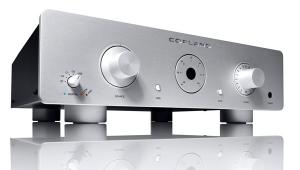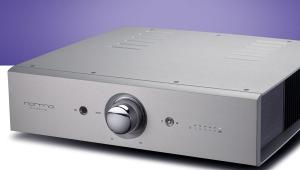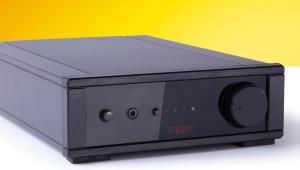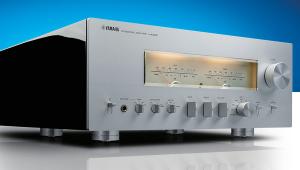Sonos Amp
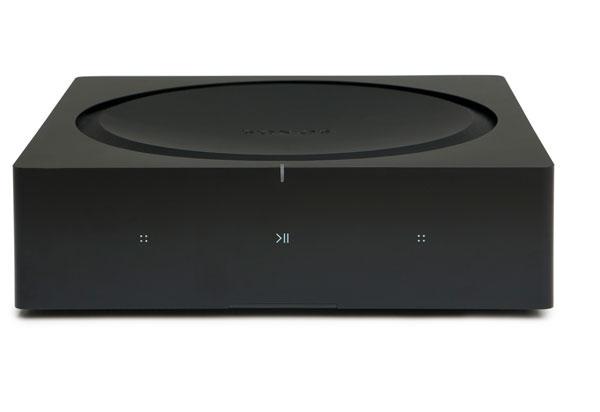
Compared with a conventional integrated amplifier or receiver, the Amp might not seem particularly well equipped with connectivity options. Rated at 2x 125W into 8ohm, there’s a set of 4mm speaker plugs/binding posts to drive a pair of passive wired speakers and an RCA output for a wired subwoofer, plus a stereo line-level RCA input.
Like all Sonos devices, the Amp connects to your home network, either via wi-fi or one of the two Ethernet ports around the back to enable you to stream music from any networked device, as well as music services such as Spotify, Tidal and Qobuz to a pair of traditional wired speakers of your own choosing.
The initial set-up process is straightforward enough, although it requires the Android or iOS version of the Sonos Controller app for mobile devices. Once the Amp is connected to your network, there are also Mac and Windows versions of the Controller that enable it to play music from a computer as well.
The second Ethernet port can be used to connect a network drive, while the HDMI ARC input enables it to be used with a screen for TV sound through the connected stereo speakers. You can also use the wired speakers as the front channels in a larger surround sound system that uses Sonos speakers and, of course, the Amp enables your wired speakers to act as part of a multi-room setup along with other Sonos devices, such as the recently introduced One speaker or Beam soundbar.
You’re not just limited to using Sonos speakers either. As with the One and Beam speaker and soundbar models, the Amp supports AirPlay 2, which means that you can also link it to any other compatible speakers. With the Sonos Amp connected to a pair of Bowers & Wilkins 606 standmounts in my lounge, it takes just a tap of a button on my iPad to link the Amp’s output to a portable Libratone Zipp 2 speaker (HFC 446) in my kitchen so that they can play music together.
The Amp does share one rather frustrating limitation with other Sonos products, however, as the company continues to show little interest in hi-res audio formats opting instead for support of FLAC files up to 16-bit/44.1kHz (meaning that 24-bit files are down-converted).
Sound quality
The Amp gets the basics right, with an open, attractive sound that works well with a variety of musical styles and genres. Streaming my collection of lossless ALAC files via the Sonos Controller app, I’m immediately struck by the relaxed, spacious sound that the Sonos Amp and Bowers & Wilkins 606 combo produces with Cut by Low. The opening guitar rings out, sharp and resounding and lingers in the air with an eerie, threatening quality reminiscent of Twin Peaks. The sound is taut and dramatic – the perfect setting for the song’s undercurrent of violence. There’s precision too, as Mimi Parker’s trademark snare-drum kicks in, with a sharp, almost staccato tone that drives the song towards its conclusion. And as Alan Sparhawk slowly intones: “Jess’ gone inside out,” the bass guitar pulses with menace, barely audible below the percussion yet as vital as a heartbeat. It’s a wonderfully well-balanced sound, with the Sonos carefully placing each instrument in the sparse arrangement, then standing back and allowing the sound to gather pace like a looming thunderstorm.
It’s a fine opening performance, but in contrast Soldier’s Poem by Muse offers a warmer, more melodic change of mood. Streaming the song from Tidal, the Amp once more guides the percussion with a sure hand, contrasting the light brushed drum with the firm tread of the bass drum that leads into the opening verse. After the sparse sound of Cut, the lush harmonies of Muse, are delivered with a rich, warm tone, yet still keeping each strand of the multi-tracked harmonies clear and distinct as they intertwine throughout. There’s a nice sense of space and dynamics too, with Matt Bellamy’s solo vocal clearly placed front and centre within the soundstage, while the multi-tracked harmonies pan smoothly between left and right channels.
Muse finish the Black Holes And Revelations album with the spaghetti-western epic, Knights Of Cydonia. The Sonos handles the change of pace admirably, with a clipped, galloping drum beat that vividly conjures up images of cowboys charging along on horseback. The riffing guitar takes off like a rocket, with an irresistible head-banging energy, ensuring those Queen-influenced harmonies have a nice edge to them.
Conclusion
The lack of hi-res support means that Sonos continues to neglect the needs of audiophiles, but its attractive sound quality will see the Amp earn its place in many homes. It brings the company’s robust multi-room know-how to a pair of passive speakers as part of a hi-fi setup or TV sound system, and is an attractive addition to the Sonos ecosystem. CJ
DETAILS
Product: Sonos Amp
Price: £600
Origin: US/China
Type: Integrated amplifer
Weight: 2.1kg
Dimensions: (WxHxD) 217 x 64 x 217mm
FEATURES
AXA35
● Quoted power output: 2x 125W (8ohm)
● 16-bit/44.1kHz-capable DAC
● Inputs: 1x stereo RCAs; 1x HDMI ARC; 1x RCA (subwoofer)
● Connectivity: 2x Ethernet ports; wi-fi; AirPlay 2
Read the full review in October 2019 issue 454
 |
Inside this month's issue:
Q Acoustics 3020c standmount loudspeakers, Perlisten R10s active subwoofer, Quad 33 and 303 pre/power amps, Acoustic Solid Vintage Full Exclusive turntable, newcomer Fell Audio Fell Amp and Fell Disc and lots, lots more...
|



